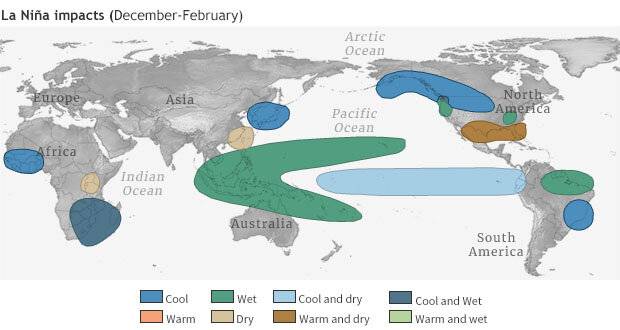
Indian winters are going to be really harsh this time, as La Nina is here. This phenomenon is threatening to dip the temperatures to around 3 degree Celsius. According to Bloomberg’s forecast, the months of January and February are going to get very cold.
La Nina is emerging across the equatorial Pacific, which will worsen the droughts in California and South America, freezing winters in parts of the US and Japan and is also posing a major risk to the world’s already affected food and energy supplies.
What is La Nina?
La Nina is a Spanish term for “The Little Girl”, which simply means “a cold event”.
These events represent periods of below-average sea surface temperatures (decreased by more than 0.9 degree Fahrenheit) for at least 5 successive 3-month seasons, i.e., when the surface water temperature in the eastern Pacific gets comparatively colder than normal, because of which a strong high pressure over the eastern equatorial Pacific is developed.
Conditions:
La Nina is caused by a build-up of cooler than normal waters in the tropical Pacific region (Pacific Ocean between the Tropic of Cancer and the Tropic of Capricorn). A low pressure zone develops over the western Pacific which contributes to an increased rainfall, along with that a high pressure zone develops over the central and eastern Pacific, resulting decreased cloud formation and rainfall in the region.
Impact:
During this phenomenon, southeastern Africa and northern Brazil observe more rainfall than normal. However, Northern Australia witnesses catastrophic floods during the phenomena.
The cold air occupies a large part of the Indian sub-continent.
In the ‘La Nina’ Summer Monsoon rainfall in the southeast Asia tends to be greater than normal, especially Northeast India & Bangladesh.
The phenomenon is beneficial for India’s economy because the monsoon boosts up the agriculture and its related industry. Also, it brings colder than normal winters in India as it pipes down the cold air from Siberia and South China, which interacts with the tropical heating to produce a north-south low-pressure system. This pressure pattern goes north-south which puts a lesser impact of western disturbances.
















